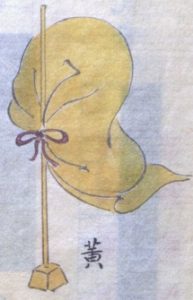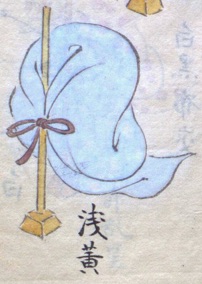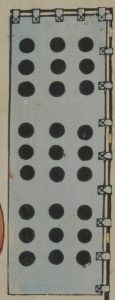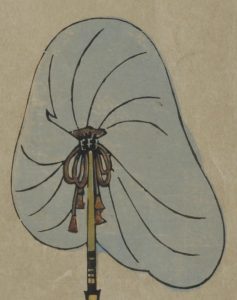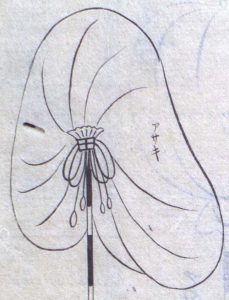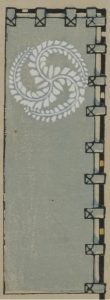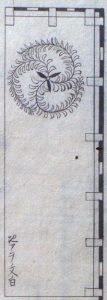Recreational research into Feudal Japan
Archive for August, 2016
Of Pale Yellows and Blues
Aug 15th (a Senshō (先勝))
I was recently looking at Ohatamoto Sōshirushizu when I noticed something interesting. The colors are helpfully labeled, which is useful to determine what distinctions between colors were being drawn and if any ink colors have changed over time. For example, yellow (黄, “ki”) is here distinguished from gold (金, “kin”), unlike in European heraldry.
But then I noticed that a somewhat-ambiguous light blue color is labeled 浅黄 (“asagi”), using that same kanji for yellow. My dictionary defines that as “light yellow”, with the first kanji meaning something like “shallow”. I thought this was fascinating: not only had the ink changed color over the centuries, but also apparently “yellow” and “light yellow” were sufficiently distinguishable in Japanese heraldry to distinguish different ranks: here ki is for the first rank and asagi for the third.
I found the idea of “yellow” and “light yellow” being distinguishable from a distance a bit improbable, but who am I to judge? I talked this up to various people, including at my Japanese Heraldry Pennsic class. But then, I was looking at another source, Shoshōkiseizu,* for unrelated reasons, and I noticed that some things there were labeled, phonetically in katakana, “asagi” as well. But I’d never thought of them as light yellow, because in O-umajirushi they’re shown as a light blue, and because there’s another word 浅葱, also pronounced “asagi”, that means light blue. Were these also secretly light yellow, with ink that changed over time? Or was something else up? It seemed improbable that they’d be labeled “asagi” if that was an ambiguous color at the time.
One thing I conveniently had available is my scans from the Library of Congress copy of O-umajirushi, which I can cross-reference with my color copy. And it turns out there that there are two devices that appear the same color, one of them labeled in katakana “asagi” and one labeled “awo”, blue.** So, clearly these were not meant to be yellow.
What of Ohatamoto Sōshirushizu, then? Well, upon further investigation into asagi written 浅黄, I found an explanation. See, Japanese has this concept called “ateji”, kanji used to write something phonetically. While in modern Japanese, foreign words and such are written with katakana with no corresponding kanji, in the past even loanwords from foreign languages would be given kanji, called ateji, based on pronunciation without much regard to the meaning of the kanji. For example, the word “America”, which today would be written in katakana as アメリカ, historically might be written 亜米利加. Those kanji mean something like “next”, “rice”, “advantage”, and “increase”, respectively, but they were chosen for their pronunciation without much regard for that meaning. And, similarly, “asagi” the light blue color can, apparently, be written with ateji “浅黄”, with the kanji meaning “yellow”. (See, e.g., WWWJDIC or Weblio.) Whoever thought that was a good idea, I have no idea. (Presumably the “light yellow” version was a later development due to this confusing state of affairs.)
Historical Japanese can be quite a puzzle; I’m definitely glad to have worked this one out. Plus, now I’m free of the specter of gold-on-light-yellow banners.
*: a 1637 source available online that includes many of the same devices as O-umajirushi
**: or green
